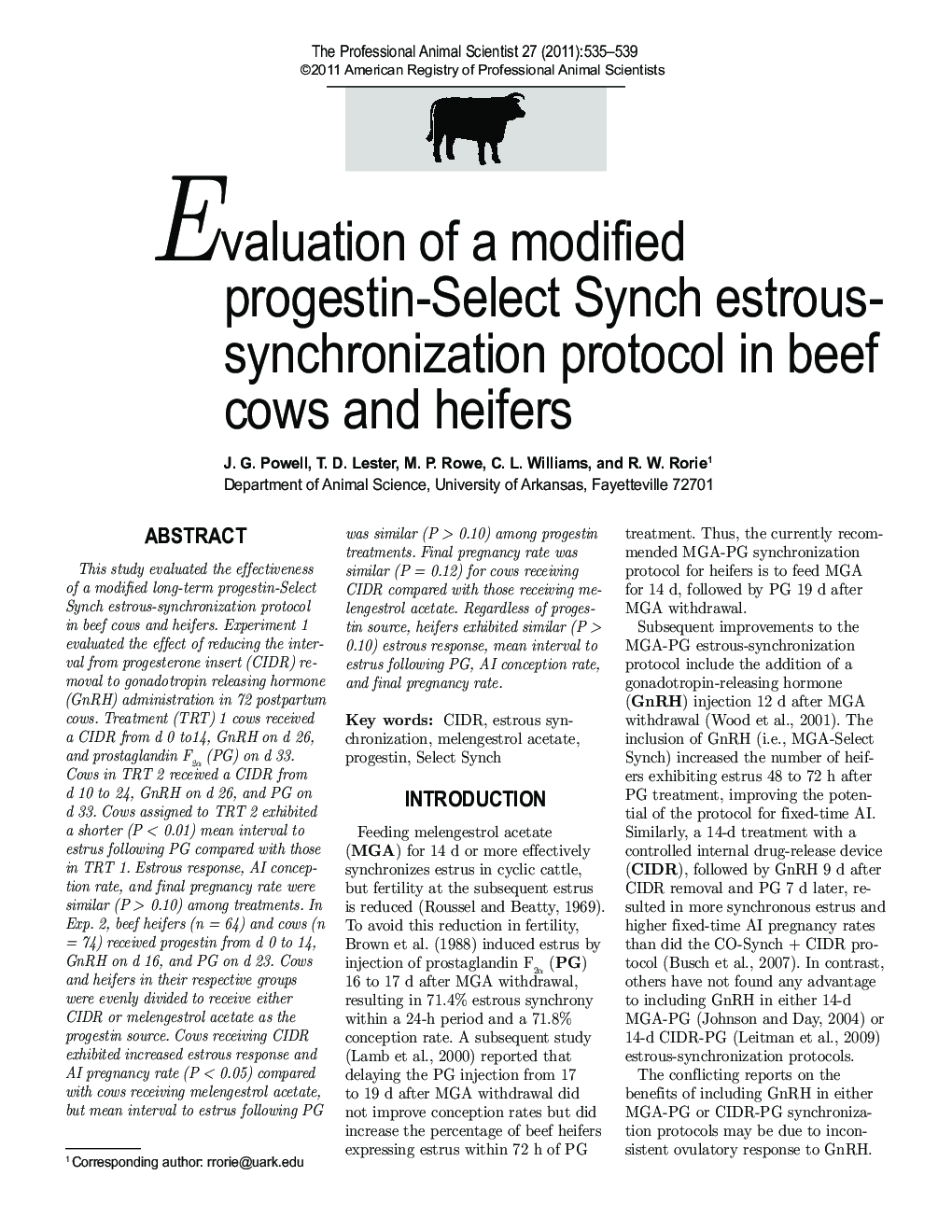| Article ID | Journal | Published Year | Pages | File Type |
|---|---|---|---|---|
| 2454001 | The Professional Animal Scientist | 2011 | 5 Pages |
Abstract
This study evaluated the effectiveness of a modified long-term progestin-Select Synch estrous-synchronization protocol in beef cows and heifers. Experiment 1 evaluated the effect of reducing the interval from progesterone insert (CIDR) removal to gonadotropin releasing hormone (GnRH) administration in 72 postpartum cows. Treatment (TRT) 1 cows received a CIDR from d 0 to 14, GnRH on d 26, and prostaglandin F2α (PG) on d 33. Cows in TRT 2 received a CIDR from d 10 to 24, GnRH on d 26, and PG on d 33. Cows assigned to TRT 2 exhibited a shorter (P < 0.01) mean interval to estrus following PG compared with those in TRT 1. Estrous response, AI conception rate, and final pregnancy rate were similar (P > 0.10) among treatments. In Exp. 2, beef heifers (n = 64) and cows (n = 74) received progestin from d 0 to 14, GnRH on d 16, and PG on d 23. Cows and heifers in their respective groups were evenly divided to receive either CIDR or melengestrol acetate as the progestin source. Cows receiving CIDR exhibited increased estrous response and AI pregnancy rate (P < 0.05) compared with cows receiving melengestrol acetate, but mean interval to estrus following PG was similar (P > 0.10) among progestin treatments. Final pregnancy rate was similar (P = 0.12) for cows receiving CIDR compared with those receiving melengestrol acetate. Regardless of progestin source, heifers exhibited similar (P > 0.10) estrous response, mean interval to estrus following PG, AI conception rate, and final pregnancy rate.
Related Topics
Life Sciences
Agricultural and Biological Sciences
Animal Science and Zoology
Authors
J.G. Powell, T.D. Lester, M.P. Rowe, C.L. Williams, R.W. Rorie,
